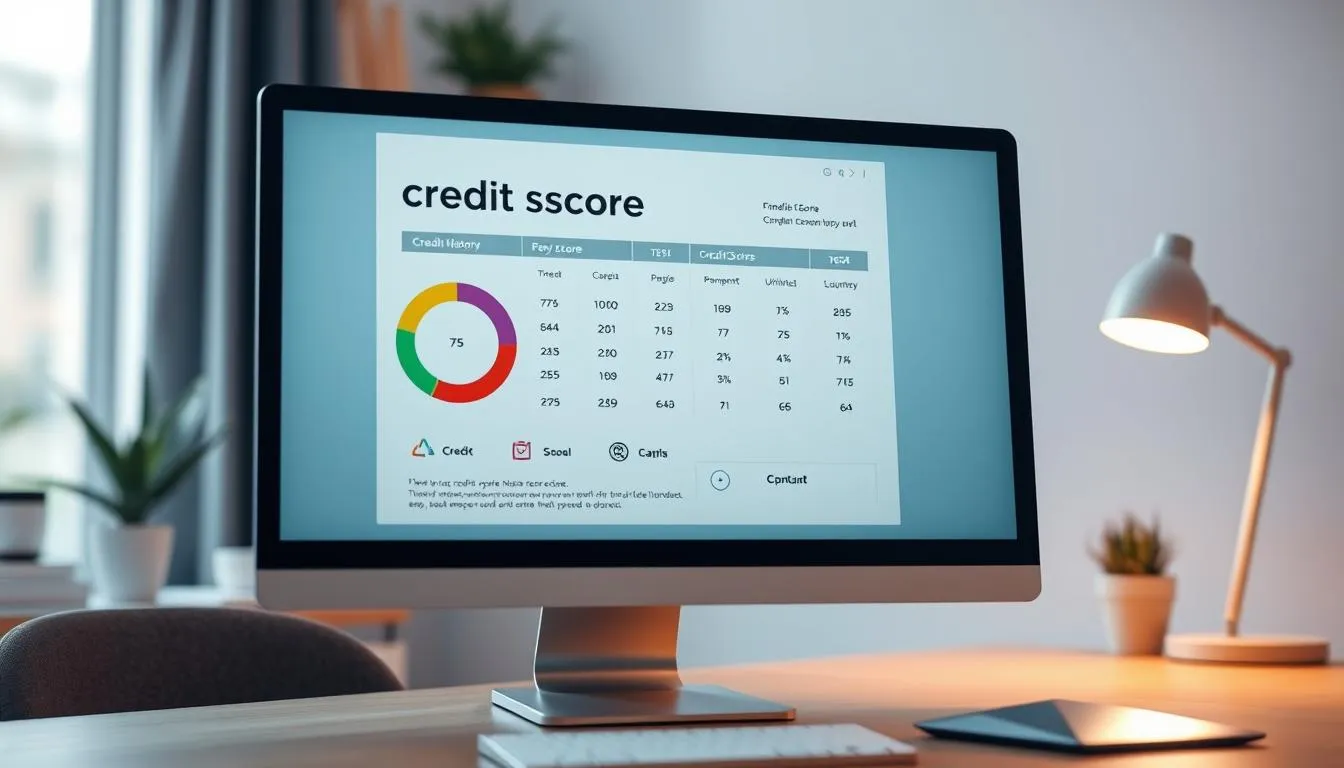Sixty-six percent of Americans say they plan a financial change this year, according to Fidelity’s survey — a striking sign that many want to take control of their money now.
This guide helps turn broad New Year intentions into clear steps you can follow all year long. We’ll show how to set priorities, build a budget that funds goals first, and create an emergency fund that grows with simple targets.
Expect practical advice on paying down debt, improving credit, and boosting retirement contributions without breaking your monthly plan. We’ll include markers for those planning to rent or buy, and ways to increase income through pay talks and side work.
Your finances link directly to well-being. When you automate savings and plan with small wins, stress drops and health often improves. Use this piece to shape sustainable resolutions 2025 into habits that last.
Key Takeaways
- 66% of Americans plan a financial change this year — momentum you can use.
- Prioritize goals by automating savings and funding them first.
- Start an emergency fund with clear starter and stretch targets.
- Paying down debt and capturing employer matches grows long-term wealth.
- Small income boosts and smarter spending speed up progress.
- Planning finances reduces stress and supports better health.
Why “Saving more as top resolution” leads 2025 New Year goals
A clear financial focus in the new year helps turn uncertainty into steady progress. Fidelity’s 2025 survey found 66% of Americans plan a financial change, with cash buffers, debt reduction, credit building, and retirement boosts at the top of many lists.
What surveys say about financial habits this year
Most people pick cash protection because rising prices and shifting rates made last year unpredictable. That common goal reflects a desire for control and better confidence.
How inflation, interest rates, and housing trends shape your plan
Truist notes inflation, rate cuts, and housing stress created both obstacles and openings. Elevated housing costs make an emergency fund essential.
“Start with a simple written plan that you review quarterly so you can adjust contributions when rates or pay change.”
- Quick wins: prioritize high-cost credit balances to protect cash flow.
- Dashboard: track savings rate, fund balance, and debt payoff pace.
- Time: begin early in the year to automate deposits and build momentum.
| Driver | Effect on plan | Action |
|---|---|---|
| Inflation | Higher living costs | Increase emergency target |
| Rates | Loan costs change | Prioritize high-interest debt |
| Housing | Elevated rent/mortgage | Adjust budget and savings rate |
Build a budget that prioritizes savings from day one
A budget that assigns every dollar a job makes hitting goals easier and less stressful. Start by listing income and recurring bills, then separate fixed items from variable costs to see where your money really goes.
Track income and expenses: fixed vs. variable spending
Use three months of bank and card activity to classify fixed items (rent, utilities, insurance) and variable ones (groceries, transport, dining). This gives an accurate baseline instead of guesses.
Set realistic category limits and adjust over time
Give each category a limit you can maintain month after month. Expect to tweak limits every few weeks at first, then switch to monthly check-ins as habits form.

Tools and methods: budgeting apps, envelope, and zero-based budgeting
Zero-based budgeting is a simple step: assign every dollar to savings, debt, bills, or spending so contributions happen before discretionary choices. Use an app, a spreadsheet, or the envelope method and keep one main spending account to simplify tracking.
- Automate a “first-day” transfer to savings to make the plan stick.
- Create sinking funds for irregular costs so they don’t derail progress.
- Track three metrics: savings rate, variable spending variance, and on-time bills.
Create and grow an emergency fund
Start an emergency cushion that covers essential bills when the unexpected arrives.
Starter vs. stretch goals: begin with one month of essential expenses, then aim for three months. If your income varies or you support dependents, set a long-term goal of nine to twelve months.
Where to keep it: keep the money in a separate high-yield savings account so the cash stays liquid and earns interest. Use a dedicated account rather than your daily spending account to avoid accidental withdrawals.
Make it automatic
Automate deposits via payroll split or recurring transfers on payday. Paying yourself first turns building emergency reserves into a habit.
- Calculate monthly essentials—housing, utilities, food, insurance, and transport—to set clear fund targets.
- Use a two-tier approach: a primary account for immediate needs and a backup savings account for medium-term shocks.
- Park windfalls like tax refunds directly into the fund and use round-up tools to add spare change over time.
Quick steps: set a reachable starter target, open an interest-bearing account, automate transfers, and review balances quarterly. If an emergency occurs, use the fund and restart contributions right away to restore the safety net.
Pay down debt and protect your credit score
Start by mapping every balance and its rate—then attack the ones costing you the most. The Federal Reserve reports 77% of Americans carry some debt, and TransUnion finds the average credit card user keeps a balance above $6,000.
Target high-interest credit card balances first.
Target high-interest balances
List all debts, interest rates, and minimums. Direct extra payments to the highest-rate credit card balances to cut total interest and finish sooner.
Choose a payoff method that fits you
Pick a method you will stick with: avalanche saves the most interest, while snowball builds quick wins by clearing small accounts first. Both work if you stay consistent.
Monitor reports and utilization
Pull free reports from Equifax, Experian, and TransUnion via AnnualCreditReport.com. Check for errors and keep utilization under 30% to protect your credit score.

| Method | Best for | Interest impact | Notes |
|---|---|---|---|
| Avalanche | Minimizing interest | High | Attack highest-rate balances first |
| Snowball | Motivation and momentum | Moderate | Pay smallest balances first |
| 0% Transfer | Short-term consolidation | Variable | Watch fees and promo period |
- Automate minimums on every card and schedule extra principal payments mid-month.
- Consider nonprofit counseling or a 0% transfer for structure, if needed.
- Keep monthly payment totals steady and redirect freed funds to the next target.
Boost retirement savings without derailing your budget
A few simple account moves can keep your retirement goals on track without straining monthly cash flow. Truist finds 67% of Americans have a retirement account but only 34% feel on track. Aim for at least 10% of pretax income and focus on practical, repeatable steps.
Start or increase 401(k) and IRA contributions
Enroll in your workplace plan and set contributions to capture the full employer match. If no plan exists, open an IRA and automate monthly deposits. Consider a Roth IRA for tax-free withdrawals if you expect higher taxes later.
Capture employer match and use auto-escalation
The employer match is effectively part of your income. Increase contributions by 1%–2% each year or after raises to protect your budget while compounding progress. Use your plan’s auto-escalation when available.
Rebalance annually for risk tolerance and diversification
Review allocation once a year and rebalance across stocks, bonds, and cash to keep your target risk. Low-cost index or target-date funds make diversification simple and lower fees, which improves long-term progress.
- Track a single metric: contribution rate plus employer match to measure steady progress.
- If behind, prioritize the match, pay down high-rate debt, then raise contributions incrementally.
- Review fees inside your account and choose lower-cost options to keep returns compounding for retirement.
Keep housing costs in check and prepare for homeownership
Housing often becomes the largest single line in a monthly plan, so keeping it manageable protects progress.

The 30% take-home pay guide for rent or mortgage
Truist recommends keeping total housing expenses at or below 30% of take-home pay. This helps protect your other goals and lowers financial stress through the year.
If costs creep above that mark, trim utilities, shop insurance and internet providers, or consider a smaller space or neighborhood to regain margin.
First-time buyer readiness: credit score, down payment, and emergency fund
For first-time buyers, aim for a 700 credit score or higher. A stronger score can lower interest costs and improve mortgage options.
Save at least 3% for a down payment, but target a larger deposit if possible to cut monthly costs.
Keep a healthy emergency fund for several months before buying so repairs or job disruptions don’t drain your safety net.
- Estimate all-in home ownership expenses: mortgage, taxes, insurance, HOA, and maintenance so you don’t undercount recurring costs.
- Build a dedicated “home fund” for your deposit and closing costs, separate from your emergency savings.
- Practice trial payments by saving the difference between rent and a projected mortgage to test your budget.
| Issue | What to track | Quick action |
|---|---|---|
| Affordability | Take-home pay vs. housing expenses | Keep housing ≤30% of net |
| Credit | Score and utilization | Pay on time; reduce balances |
| Market | Local prices and interest rates | Delay purchase if unaffordable |
Revisit your timeline quarterly and track local rates and prices. If affordability is tight, continue renting while you grow savings and strengthen credit.
Increase your income to accelerate savings progress
Earning extra income gives you a clear way to speed financial progress without cutting essentials.
Ask for a raise by building a short case with quantified wins. Time your request after a visible success or during reviews. Use salary tools to benchmark pay and practice the conversation.
Upskill with targeted certificates or courses that employers value. Update your resume and LinkedIn with measurable outcomes to position yourself for higher-paying roles or a job change.
- Prepare a raise case with results and timing tied to performance.
- Choose side work that uses your strengths—freelance writing, tutoring, design—and track hours to protect health and time.
- Set a clear extra monthly income goal and funnel 50%–100% of that money to savings or debt payoff.
- Batch side work in focused blocks and reassess quarterly; pivot if it hurts well-being.
- When switching roles, negotiate total compensation: salary, bonus, equity, and benefits.
Truist notes that aligning career choices with values often improves health and long-term earnings. Automate transfers of any side pay to savings so windfalls don’t disappear, and review progress each quarter to keep momentum this year.
Spend smarter: subscriptions, intentional shopping, and daily habits
Small, intentional tweaks to daily habits can free up cash without feeling like sacrifice. Many households lose roughly $32 each month to unused subscriptions, so an audit pays off quickly.
Audit and cancel unused subscriptions
List every subscription with its renewal date and monthly cost. Cancel services you haven’t used in 30–60 days to reclaim cash flow.
Put all subscriptions on one card and set one renewal day each month. That makes review fast and stops forgotten charges.
Set monthly spending caps and apply the 24-hour rule
Set category caps for dining, entertainment, and shopping and track them weekly so your budget holds steady through the month.
Use the 24-hour rule for nonessential buys. Delay decisions and see how urgent the purchase feels the next day.
- Shift habits: brew coffee at home and meal-prep lunches to cut daily costs.
- Empty online carts before bed; most items lose urgency with time.
- Target small leaks—unused apps, overlapping services, premium tiers—and tie each cutback to a specific goal like an emergency fund or debt payoff.
- Schedule a 15-minute monthly audit to keep subscriptions tidy and spending aligned with long-term goals.
Optimize your accounts, insurance, taxes, and automation
Put the right accounts and automations in place to cut friction and protect your short-term goals. A clear setup reduces fees, earns better interest, and makes routine tasks simple.
Use the right accounts for each purpose
Match cash to account types: keep a checking account for bills, a high-yield savings account for short goals, and a money market for larger buffers.
Consolidate small idle balances into one savings account to boost returns and simplify tracking.
Review insurance after life changes
After marriage, a new home, or a child, update policies and beneficiaries. Check life, auto, renters, homeowners, flood, and disability coverage to protect family health and finances.
Shop insurance rates yearly and adjust deductibles so premiums and out-of-pocket risk balance your budget.
Check tax withholding and avoid surprises
Review tax withholding early in the year. Adjust your W-4 for dependents, multiple jobs, or side income so you won’t face a large bill or big refund at filing time.
Automate savings and use round-ups
Automate transfers on payday and enable round-up programs so small transactions nudge your goals forward without effort. Use bank alerts for low balances and upcoming bills to prevent fees.
| Area | Action | Benefit |
|---|---|---|
| Checking | Primary bills and direct deposits | Fewer overdraft fees |
| High-yield savings | Short-term goals and emergency cushion | Higher interest and liquidity |
| Money market | Large buffers and temporary funds | Better rates with limited withdrawals |
| Insurance | Annual review after life events | Proper protection for health and assets |
Simple steps: build an operations plan with bill dates, transfer schedules, and a quarterly checklist for rates, fees, and coverage. Keep an “operating manual” with logins and due dates so your family can manage money confidently.
Conclusion
Finish by choosing small, repeatable steps that protect your cash and reduce debt steadily.
Fidelity’s survey shows 66% of people plan financial changes this new year, and the Fed reports 77% carry some debts. Use those facts to push practical action: automate transfers to an emergency fund and your retirement accounts, then check progress each month.
Prioritize high-interest credit balances on each card and pick a payoff method you will stick with. Keep housing costs near the 30% guideline, target a 700+ credit score before buying, and hold at least three months of expenses in your fund.
Small wins add up: add $25 weekly, cancel unused subscriptions, or raise retirement contributions by 1% after a pay bump. Write your top three goals, schedule a budget session, and set automations today to make resolutions 2025 actually stick.
FAQ
Why is setting a goal to save more often a common New Year priority for 2025?
Many people pick improving finances as a yearly goal because rising living costs and shifting interest rates made budgets tighter. Surveys show that building an emergency fund, reducing credit card debt, and increasing retirement contributions rank high as achievable, measurable targets that improve long-term security and credit health.
How should I track income and expenses to build a workable budget?
Start by listing fixed monthly bills and average variable spending like groceries and gas. Use a budgeting app or a simple spreadsheet to categorize transactions. Review monthly and set category limits, adjusting as your income or bills change. That creates a clear plan to funnel money toward emergency funds and debt repayment.
What are realistic short- and long-term emergency fund targets?
A common starter goal is three months of essential expenses; a stretch goal covers six to nine months or more if your job is unstable. Aim to keep this money in a separate high-yield savings account or money market for easy access and better interest than checking.
Where should I keep my emergency cash for safety and growth?
Use a high-yield savings account (HYSA) or a money market account at a reputable bank. Keep the fund in a separate account from daily checking to avoid accidental spending. Look for competitive rates and FDIC insurance to protect your balance.
Which debt payoff method is better: snowball or avalanche?
The avalanche method targets the highest-interest debts first and saves more on interest long-term. The snowball method pays the smallest balances first to build momentum and motivation. Choose the method you’ll stick with—consistency matters most for progress and credit score improvement.
How can I protect and improve my credit score while paying down debt?
Keep credit utilization low by paying down balances and avoiding new high-balance charges. Make all payments on time, check your credit reports from Experian, Equifax, and TransUnion annually, and dispute errors promptly. Reduced debt and on-time payments boost scores over time.
What steps can I take to increase retirement contributions without wrecking my monthly budget?
Start by capturing any employer 401(k) match — it’s free money. Gradually raise contributions by 1% every few months or direct raises into retirement accounts. Consider a Roth IRA for tax diversification and rebalance annually to match your risk tolerance.
How do housing costs affect my ability to reach financial goals?
Housing is usually the largest monthly expense. A common guideline is keeping rent or mortgage near 30% of take-home pay, but personal comfort and local markets vary. Improving your credit score and saving a larger down payment can lower monthly mortgage costs and speed other savings goals.
What practical ways can I increase my income to accelerate progress?
Ask for a raise with documented accomplishments, pursue relevant upskilling or certifications, or take on a side hustle like freelance work or gig economy tasks. Additional income should be directed toward an emergency fund, high-interest debt, or retirement to compound benefits.
How do I curb subscription bloat and impulsive purchases?
Audit recurring charges quarterly and cancel unused services. Set monthly spending caps for discretionary categories and use a 24-hour rule for nonessential buys. Small daily habit changes and intentional shopping free up cash for financial goals.
Which accounts and automation strategies help maintain progress?
Use separate accounts for checking, emergency savings (HYSA), and long-term goals. Set up automatic transfers, direct deposit splits, and round-up tools to move money into savings consistently. Review insurance coverage and tax withholding annually to avoid surprises that derail plans.
How often should I review and adjust my budget and goals?
Review budgets monthly to catch overspending and reallocate funds. Revisit bigger goals quarterly or after major life events like a job change, move, or birth. Regular check-ins help you stay on track and adapt to changing income, interest rates, and expenses.
